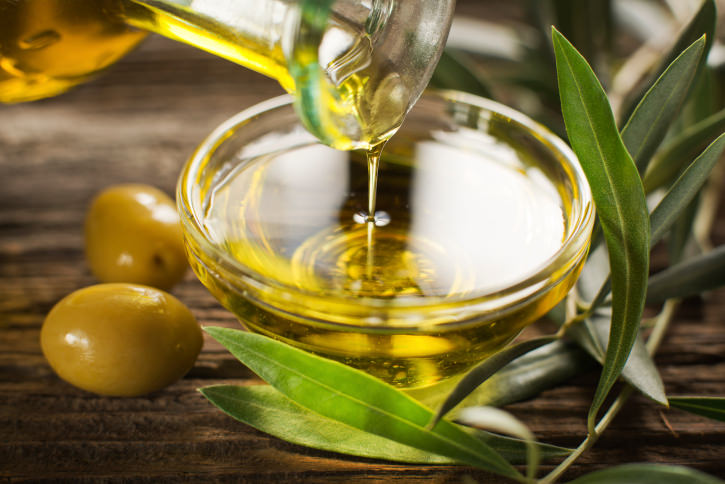Menu
Install the app
How to install the app on iOS
Follow along with the video below to see how to install our site as a web app on your home screen.
Note: This feature may not be available in some browsers.
You are using an out of date browser. It may not display this or other websites correctly.
You should upgrade or use an alternative browser.
You should upgrade or use an alternative browser.
Greek Food, Cooking and Recipe Community
How can I make juicy Greek grilled chicken breast?
- Thread starter francescool
- Start date
1 - 4 of 4 Posts
kosta_karapinotis
Active member
Try marinating the chicken overnight for the best results! The longer it marinates the better and jucier it will be. Make sure you add lots of olive oil because chicken breast is very dry and will need fat in order to cook and not stick to the pan/grill
k_tsoukalas
Administrator
I marinate mine in a ladolemono and it makes the chicken nice and plump!

 www.greekboston.com
www.greekboston.com

Recipe for Ladolemono - Greek Style Olive Oil and Lemon Dressing
Ladolemono is a dressing or marinade that is made from olive oil and fresh lemon juice and is used generously in Greek cooking.
1 - 4 of 4 Posts
JOIN THE DISCUSSION AND READ OTHER GREEK INFO:
How to learn about different regional cuisines in Greece?
- toniiv
- Greek Food Forum
- Replies: 0
I have learned so much about Greek cuisine by being on this forum! I know that there are standard recipes that everyone seems to cook.
For example, you can get souvlaki all over. Everyone seems to serve a village salad with slight variations. Most regions seem to make moussaka. There are tons of others.
I have also noticed that each region has their own specialties. How do you go about learning about them?

For example, you can get souvlaki all over. Everyone seems to serve a village salad with slight variations. Most regions seem to make moussaka. There are tons of others.
I have also noticed that each region has their own specialties. How do you go about learning about them?

How does this fasolada recipe look?
- nm1999
- Greek Food Forum
- Replies: 0
Does anyone have any idea if the ingredients list in this fasolada recipe looks good? I want to make it soon - seems like a good lenten meal to me.
I am questioning the lemon and the garlic - I never put both lemon and garlic together. Also, I have never used stock before, I usually put tomato paste in it. But this recipe has diced tomatoes so I am questioning if the stock is necessary.
- 1 cup dried white beans (such as Great Northern or navy beans), soaked overnight
- 1 onion, finely chopped
- 2 carrots, diced
- 2 celery stalks, diced
- 2 cloves garlic, minced
- 1 can (14 oz) diced tomatoes
- 4 cups vegetable stock
- 2 bay leaves
- 2 tablespoons olive oil
- Salt and pepper to taste
- Chopped fresh parsley for garnish
- Optional: lemon wedges for serving
I am questioning the lemon and the garlic - I never put both lemon and garlic together. Also, I have never used stock before, I usually put tomato paste in it. But this recipe has diced tomatoes so I am questioning if the stock is necessary.
Enjoying Cooking with Greek Honey
- axariotisxy
- Greek Food Forum
- Replies: 1
One of the things I love most about Greek honey is its versatility. You can use it in so many different ways in the kitchen. I've drizzled it over Greek yogurt for breakfast, mixed it into salad dressings for a touch of sweetness, and even used it as a glaze for roasted vegetables. The depth of flavor it adds to dishes is truly remarkable.
But perhaps my favorite way to use Greek honey is in baking. It adds a wonderful depth of flavor to cakes, cookies, and pastries. I recently made a batch of baklava using Greek honey, and it was a game-changer. The honey soaked into the layers of phyllo dough, creating a sweet and sticky treat that was absolutely irresistible.
I go out of my way to buy it - if I can't find it locally, I get it online. When I go to Greece, I get some in Greece, too.
What do you love to use Greek honey for?

But perhaps my favorite way to use Greek honey is in baking. It adds a wonderful depth of flavor to cakes, cookies, and pastries. I recently made a batch of baklava using Greek honey, and it was a game-changer. The honey soaked into the layers of phyllo dough, creating a sweet and sticky treat that was absolutely irresistible.
I go out of my way to buy it - if I can't find it locally, I get it online. When I go to Greece, I get some in Greece, too.
What do you love to use Greek honey for?

What are the most famous Greek cheeses?
- knicks_fan87
- Greek Food Forum
- Replies: 0
I've recently embarked on a culinary quest to explore the rich and diverse world of Greek cheeses. From the tangy feta found in traditional Greek salads to the sizzling delights of halloumi, Greece's cheese culture seems incredibly vast and flavorful. 
I'm reaching out to this knowledgeable community to ask: What are the most famous Greek cheeses that you've tried or heard of?
Are there any particular varieties that are a must-try or any hidden gems that rarely escape the borders of Greece? And if you have any delicious recipes or pairings to share, I'd love to hear about those too!
I'm reaching out to this knowledgeable community to ask: What are the most famous Greek cheeses that you've tried or heard of?
Are there any particular varieties that are a must-try or any hidden gems that rarely escape the borders of Greece? And if you have any delicious recipes or pairings to share, I'd love to hear about those too!
Greek Halva Recipe to Enjoy During Lent?
- d_kakavouli
- Greek Food Forum
- Replies: 2
I love Halva year round but I often see it a lot during Lent. My recipe doesn't seem Lent friendly to me. Any ideas on how I can adapt it?
Ingredients:
Ingredients:
- 1 cup semolina
- 1 cup granulated sugar
- 1/2 cup unsalted butter
- 2 cups water
- 1/4 teaspoon ground cinnamon
- 1/4 cup chopped almonds or walnuts (optional)
- 1/4 cup raisins (optional)
- In a medium-sized saucepan, melt the butter over medium heat.
- Add the semolina to the melted butter and stir continuously for about 5-7 minutes, or until the semolina turns golden brown and begins to emit a nutty aroma.
- While stirring the semolina mixture, gradually add the sugar and continue to cook for another 2-3 minutes until the sugar is fully incorporated.
- Slowly pour in the water, stirring constantly to avoid lumps from forming. Be careful as the mixture may splatter.
- Reduce the heat to low and continue stirring the mixture until it thickens to a porridge-like consistency, about 5-7 minutes.
- Stir in the ground cinnamon and optional chopped nuts and raisins, if using.
- Remove the saucepan from the heat and let the halva rest for a few minutes to thicken further.
- Serve the halva warm or at room temperature, either as a dessert or a sweet breakfast treat.
Sign up for a free account and share your thoughts, photos, questions about Greek food, travel and culture!
WorldwideGreeks.com is a free online forum community where people can discuss Greek food, travel, traditions, history and mythology.
Join Worldwide Greeks here!
Join Worldwide Greeks here!
JOIN COMMUNITY FOR FREE
LOGIN TO YOUR ACCOUNT



